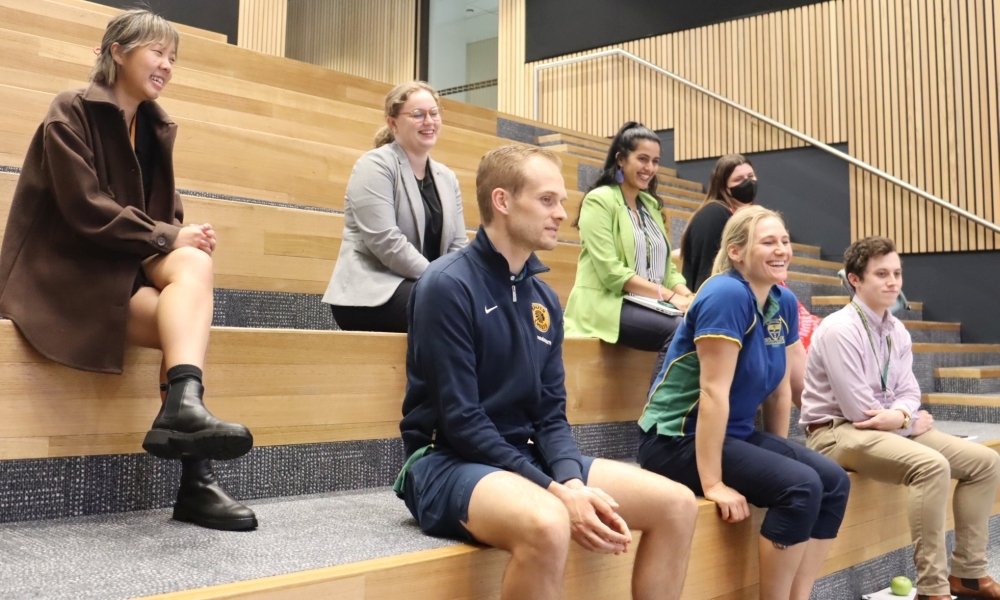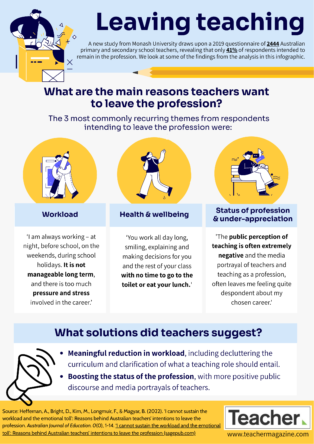Attending a professional learning event is a great way to reflect on what’s happening in your own school and improve practice. For leaders at Brisbane’s Brigidine College, Indooroopilly (BCI) it prompted a new approach to supporting and retaining pre-service and early career teachers. In this two-part Q&A, Allison Johansen (Assistant to the Principal, Professional Teaching and Learning) shares more about the program and its positive impact.
Can you tell readers a little bit about BCI?
BCI is an Independent Catholic Secondary College for girls. Our College community educates approximately 860 young women to be the best version of themselves. We pride ourselves on our ability to ensure all staff receive the support required to flourish and develop. There are 74 full-time equivalent teachers and 40 school officers. The College works hard to create leading programs, facilities and professional support to attract and retain the best teachers and support staff. They, in turn, ensure that our students receive the best possible education.
What does your role entail?
My role was developed to support our teaching staff to be the best educators possible. This is achieved by using evidence-based pedagogy, feedback on lesson observations, effective research-based interventions, testing in cyclical practices and analysis of the impact. The role supports each educator from pre-service through to transition to retirement. By catering to the learning needs of each individual, they have ownership over their learning needs.
What prompted the change in approach to supporting new and early career teachers?
In 2019 our College Principal, Brendan Cahill, and I attended Griffith University's ‘Queensland Creating Futures Summit: a focus on the teaching profession’. Inspiring speakers such as Deanne Fishburn (Director of Queensland College of Teachers), Professor Donna Pendergast (Dean and Head of School, School of Education and Professional Studies, Griffith University) and Dr Alison Willis, (Lecturer, Curriculum and Pedagogy, University of Sunshine Coast) presented regarding reframing teacher education. Their presentations made us reflect on the data being presented. We brainstormed ways where we could change methodology to better support pre-service teachers; be they young and living at home, or mature-aged students changing careers with a family of their own. Data presented was around the number of teachers who drop out in the first five years of teaching, the decreasing number of students who pick education to study at tertiary as their first option, the perception of teaching from the wider community and planning for the workforce that Queensland and Australia need. It was clear that Initial Teacher Education (ITE) needed to adapt.
Participants from the summit also contributed ideas to combat this data to include paid placements, the flexibility of hours, more placement time, and hands-on learning.
In terms of BCI then, what were the questions you and your colleagues were reflecting on? I understand this then led to a series of consultations.
We asked ourselves:
- Did our current way of supporting pre-service teachers work? How did we know? What evidence did we have to support this?
- Did our four-year Early Career Teacher (ECT) program support our developing teachers to succeed?
- How can we promote Brigidine College educators and teacher excellence?
- How can we be dynamic and proactive in this space?
- What could we do to allow for flexibility in supporting preservice teachers to be in the classroom more?
- Can we create a culture of learning for all?
In order to answer these questions, we sent out surveys after pre-service teacher placements, and to our ECTs, to assess, validate and find suggestions on ways to improve what we had in place. We also had discussions, some formal and some informal, with our own network of Religious Independent Schools, our experienced teachers and our own professional contacts at a range of universities and schools. And we looked at our retention of ECTs.
Once we had some ideas for the Pre-service Teacher Fellowship Program, we ran this past our ECTs to see whether it would have been something they would have found useful, interesting, and supportive of their learning and development in their Initial Teacher Education (ITE). We also asked pre-service teachers who were on placement whether the program was flexible enough and catered to their needs. We also requested feedback from our experienced teachers, as they would be the mentor teachers through the program, so it needed to work for them as well.
What were the main themes to come from the consultations, both positives and areas for improvement?
The main themes coming through were:
- A comprehensive Induction Program was essential for placement/employment to succeed.
- Pre-service and ECTs required considerable up-skilling in technology before starting their placement, including using laptops and 1:1 strategies, connecting to projectors wirelessly, OneNote, Teams, sharing files with students etc.
- Time was needed to upskill before employment/placement began – this needed to be sustainable from a College perspective.
- One mentor teacher was best but could be stretched to two. Three was difficult for preservice teachers.
- The College's employment of an aide to support teacher admin was fundamental to the success of the program, and was appreciated by both ECT and preservice teachers.
- The College's communication policy improved their workplace conditions compared to other schools and places of work.
- The professional learning and support through BCI's Early Career Teacher program were effective and greatly appreciated.
- Reduced loads of ECTs in their first year, where possible, to allow for mentor time and extended planning time were essential to the continued success of the program.
Areas for improvement were:
- Could we have pre-service teachers on placements at different times of the year?
- The last time any pre-service and ECT had observed the start of the year (initiating routines and expectations, building relationships between and with students, how to gather critical information about student health and learning needs in your classes, sharing of resources, establish relationships with parents/carers etc.) was when they attended school themselves. For some, this was at a time with no computers and mobile phones, and for others, it was over four years ago.
- In relation to professional learning at the start of the year and working towards the strategic direction of the school – What does this mean? What does it look like? How do you cater for this in your teaching?
- Having enough time to join the school community if here on placements and possibly be involved in extracurricular activities such as coaching a team, joining a club etc.
- It was difficult for university students to come for placements during the year due to timing, length, and time off work.
- Coming halfway through a unit of work made getting to know the school, classes, mentor and teachers difficult.
Stay tuned: In tomorrow’s article, Allison Johansen explains how the program works and the positive impact it’s had on pre-service teachers and College staff.
Thinking about your own school: How do you support the work of pre-service and early career teachers? Is this effective for all staff involved? How do you know? What evidence you have?



